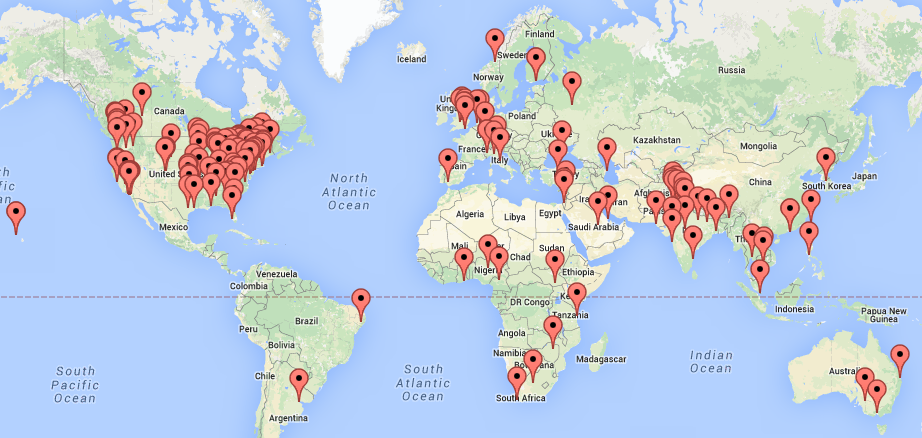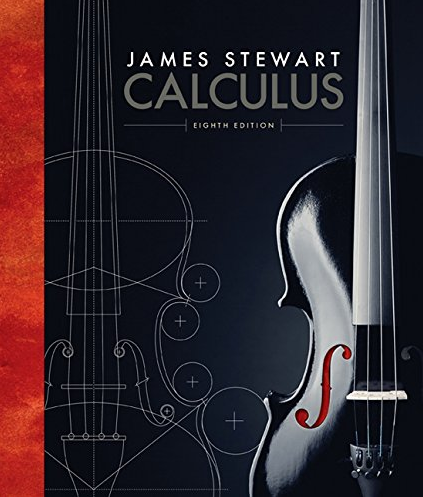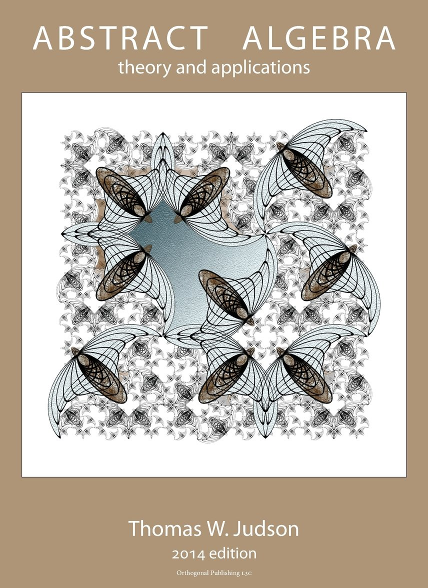- Stewart's Calculus, 8e, May 2015
- List Price: $299.99
- Amazon.com: $261.65
Open Source Mathematics with MathBook XML
Robert A. Beezer
University of Puget Sound
Open Textbooks
Definition: A textbook is “open” if the copyright holder explicitly allows unlimited copying, and the distribution of modified versions.
- Intellectually Honest: Authors are freed from market forces
- Ubiquitous: Everywhere, in many formats, on multiple devices
- Interactive: HTML + JavaScript
- Quality: Errors reported and corrected quickly
- Collaborative: Participation is encouraged
- Affordable: Zero, or low cost, to students
Intellectually Honest
- Write the book your students need.
- Other schools and students will find it very useful.
- Don't aim for broad market penetration.
- FCLA: #5 Google result for “linear algebra.”
Open textbooks allow a return to a free exchange of ideas.
Ubiquitous
FCLA: 1,000 readers online daily. Snapshot, 4 AM — 11 AM, April 22.

Ubiquitous
Universally available via the Internet.
Manufacture textbooks in a variety of formats.
- Print, PDF, HTML, EPUB, BRF, Jupyter Notebooks
- Paper, Desktop, Laptop, Smartphone, Kindle
Many of these are incompatible with commercial publishing.
Interactive
HTML enriched with Javascript widgets/applets/tools.
- GeoGebra (geometry demonstrations)
- JSXGraph (interactive graphs)
- WeBWorK (homework system)
- Skulpt (in-browser Python)
- Sage Cells (open source Mathematica, Maple, Matlab)
- Audio and Video players
- MathJax (typesetting math)
Open textbooks can be better. (Not just “as good as.”)
Quality
- “With many eyes, all bugs are shallow.”
- Students are fantastic copy-editors.
- FCLA: 500 edits credited to others.
- Majority are my own students, rest by email (worldwide).
- UPS students: $25 per mathematically significant typo.
Open textbooks can be better. (Not just “as good as.”)
Collaborative
Borrow ideas from open source software development.
- Version control: Git, Mercurial.
- Modular design: topics, applications, exercises.
- “Release early, release often.”
- Continuous improvement.
Affordable
Commercial textbooks are expensive!

Affordable
- The Internet makes physical manufacturing a non-issue.
- The Internet makes distribution almost a non-issue.
- Open licenses make digital rights restrictions unnecessary.
- Print-on-Demand makes physical copies possible.
Copyleft
- You have a copyright in everything you create, automatically.
- A lifetime monopoly, plus seventy years.
- As copyright holder, you control copies of your work.
- An open license grants additional rights.
Open Licenses
- Unlimited copying, forever.
- Possibly distribute modified versions.
- Possibly require attribution in modified versions.
- Possibly require modified versions to have same license.
- Example: Creative Commons (various options)
- Example: GNU Free Documentation License
Do not confuse this with “free to download.”
Bait and Switch
Linear Algebra and Applications Textbook
(Thomas S. Shores, website, April 22, 2015)
In order to enable prospective users to preview my text easily and conveniently, in the past I have put a copy of it on the web for your perusal. In the last few years I’ve received many helpful comments and appreciative notes for having done so. I would like to thank those of you who sent me these notes and comments. You have helped me substantially improve the text. I am now under contract with Springer-Verlag and the book has been published in their Undergraduate Texts in Mathematics series in hardbound and, more recently, soft cover editions. Therefore, I have removed the on-line copy.
Information Wants to Be Free
On the one hand information wants to be expensive, because it's so valuable. The right information in the right place just changes your life.
On the other hand, information wants to be free, because the cost of getting it out is getting lower and lower all the time. So you have these two fighting against each other.
Stewart Brand, as told to Steve Wozniak (1984)
Lighting Your Taper (Candle)
If nature has made any one thing less susceptible than all others of exclusive property, it is the action of the thinking power called an idea, which an individual may exclusively possess as long as he keeps it to himself; but the moment it is divulged, it forces itself into the possession of every one, and the receiver cannot dispossess himself of it. Its peculiar character, too, is that no one possesses the less, because every other possesses the whole of it.
He who receives an idea from me, receives instruction himself without lessening mine; as he who lights his taper at mine, receives light without darkening me.
Thomas Jefferson, Letter to Isaac McPherson (August 13, 1813)
A First Course in Linear Algebra
FCLA is an introductory textbook conceived as open-source,
free to copy/modify/distribute with a GFDL license
- December 2003: Began revising course notes
- December 2006: Version 1.0, \(\mathrm{\LaTeX}\)
- December 2006: (X)HTML Version
- July 2008: jsMath Version
- Summer/Fall 2012: Conversion to prototype XML
- Summer/Fall 2012: \(\mathrm{\LaTeX}\)/PDF and HTML versions
MathBook XML
New source format for authoring scholarly work
- May 2013: Shuttleworth Foundation Flash Grant
- Frees an author from presentation and technical details
- Write once, read anywhere
- Multiple output formats from one source
- Designed to be easy for authors
- \(\mathrm{\LaTeX}\) syntax for math (and math only)
- NOT “data exchange” XML
Abstract Algebra: Theory and Applications
- By Tom Judson, with help from RAB
- AATA was once a “real” book (1990-1997)
- Open source'd in February 2009
- #1 in Google for “abstract algebra textbook”





Physical Books
Pros:
- Stable format
- No batteries
- Well-understood navigation
- Bookshelf trophies
Physical Books
Cons:
- Expensive (yet AATA is $23.70)
- Manufactured (yet AATA may require \(\sim\)$10)
- Bulky
- Hard to search (index, table of contents)
- Supplements are additional (e.g. solutions, technology)
- Out-of-Print (AATA: print-on-demand)
- Edition churn
PDF (Portable Document Format)
Pros:
- Preserves familiar printed page format
- Portable: readable on a tablet
- Inexpensive to distribute
- Navigation: searchable, hyperlinks
- 2 GB USB = 1,000 copies of AATA
- Math: pdflatex
- Many “lecture notes” exist for “free” in this format
PDF (Portable Document Format)
Cons:
- Preserves familiar printed page format
(table of contents, index, margins, page numbers, aspect ratio) - Limited interactivity (hyperlinks)
- Suboptimal on tablets, smartphones
Web (HTML)
Pros:
- Available wherever there is a web browser
- Responsive design (smartphones)
- Interactivity options: GeoGebra, WeBWorK, Sage
- Navigation: tree view of hierarchy
- Navigation: in situ cross-references
- Navigation: information hiding (e.g. proofs, solutions)
- Math: MathJax (successor to jsMath)
Web (HTML)
Cons:
- Requires internet connection (currently)
- Search not implemented (yet)
- Difficult to commercialize content
Question:
- Which parts of traditional book design (a 580-year-old technology) do we keep and which do we upgrade/replace?
- For example, footnotes should definitely be “pop-ups” (not a hyperlink to the bottom of the page)
Other Output Formats
- EPUB: Limited interactivity (Lon Mitchell, Chris Hughes)
- BRF: Braille Ready Format (6 dots: 2^6 = 64 ASCII characters)
- Jupyter Notebooks: working conversion for single notebooks
- S5 Slideshows: meta-example, this talk
- SageMathCloud
- Sage, \(\mathrm{\LaTeX}\), Linux terminals, online
- Entire textbooks as linked Sage worksheets
- cloud.sagemath.com
Simple MathBook XML Example
<book> <title>A First Course in Linear Algebra</title> <chapter> <title>Systems of Linear Equations</title> <section> <title>Reduced Row Echelon Form</title> <p>When analyzing systems of equations...</p> </section> <section> <title>Homogeneous Systems</title> <p>The special case of ...</p> </section> </chapter> </book>
Existing \(\mathrm{\LaTeX}\) Documents?
- SL2X: Structured LaTeX to XML
- By: David Farmer, American Institute of Mathematics
- http://sl2x.aimath.org/development/collectedworks/htmlpaper/1002.1616/
Resources
- Code: GitHub, GPL'ed, rbeezer/mathbook
- Discussion: Google Groups' mathbook-xml-support
- Website: mathbook.pugetsound.edu
- FCLA: linear.pugetsound.edu
- AATA: abstract.pugetsound.edu
- Sage Math Cloud: cloud.sagemath.com
- Talks: buzzard.ups.edu/talks.html
Thanks for listening!